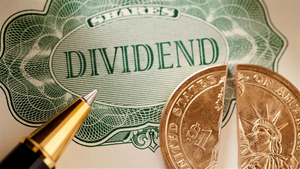
As global economies grapple with persistent inflationary pressures, gold and silver are once again asserting their traditional role as formidable hedges against the erosion of purchasing power. With the cost of goods and services continuing to rise, investors are increasingly turning to these precious metals to preserve wealth, driving their prices to multi-year highs and signaling a significant shift in investment strategies. This resurgence highlights the enduring appeal of tangible assets in an uncertain financial landscape.
The Unyielding Grip of Inflation: Why Precious Metals Matter
Inflation, a sustained increase in the general price level of goods and services, directly diminishes the buying power of fiat currencies. In such an environment, the intrinsic value and limited supply of gold and silver make them highly attractive. Unlike paper money, which can be printed in unlimited quantities, precious metals offer a tangible store of value that cannot be devalued by government decree. This fundamental difference underpins their historical significance as safe havens.
The current inflationary surge, which saw inflation reach multi-decade highs in 2021-2022 and persist into 2024-2025, has been a primary catalyst for the recent rally in precious metals. Gold prices, for instance, have surpassed multiple record peaks, climbing above $3,650 per ounce by September 2025, with projections hinting at $4,000 per ounce by mid-2026. This upward trajectory is fueled not only by inflation but also by geopolitical risks, such as ongoing conflicts in Ukraine and the Middle East, and expectations of future central bank interest rate cuts, which tend to weaken the U.S. dollar and bolster precious metal appeal. Central banks themselves have been significant buyers, diversifying their reserves away from the dollar.
Silver, often considered gold's more volatile cousin, has also experienced a substantial uplift, testing 14-year highs and reaching over $44 per ounce by September 2025—a remarkable 37.62% increase year-over-year. Silver's unique position stems from its dual nature: it acts as both a precious metal and a vital industrial commodity. Its extensive use in electronics, solar panels (photovoltaics), medical applications, electric vehicles (EVs), and 5G technology means that robust industrial demand can significantly influence its price alongside its safe-haven appeal.
Historically, the relationship between inflation and precious metal prices has been well-documented. During the 1970s oil crisis, for example, gold prices soared dramatically as investors sought refuge from rampant inflation. Similarly, fears of inflation stemming from expansive monetary policies after the 2008 global financial crisis drove gold to new highs by 2011. The COVID-19 pandemic in 2020 also saw a rapid increase in gold prices amidst economic uncertainty. These historical precedents reinforce the current narrative, underscoring the metals' reliability during periods of economic instability and currency devaluation.
Market Ripple Effects: Winners and Losers in the Precious Metals Boom
The ongoing surge in gold and silver prices is creating distinct winners and losers across various market sectors, while also reshaping broader investment landscapes.
Precious metals mining companies are among the most direct beneficiaries. Companies like (Barrick Gold, NYSE: GOLD), (Newmont, NYSE: NEM), and (Wheaton Precious Metals, NYSE: WPM) are poised to see increased revenues and potentially higher profit margins as the value of their primary products rises. While these companies face rising operational costs due to inflation (e.g., labor and energy), the significant increase in commodity prices often outweighs these expenses. Silver miners, in particular, may also benefit from higher prices for by-product metals such as zinc and lead, further bolstering their financial performance. Investment funds and Exchange-Traded Funds (ETFs) focused on precious metals, such as the SPDR Gold Shares (NYSEARCA:GLD) or iShares Silver Trust (NYSEARCA:SLV), are also experiencing increased inflows and appreciation, offering investors direct exposure to the rising prices without physical ownership.
Conversely, industries heavily reliant on silver as an industrial commodity could face increased production costs. Manufacturers in the electronics, solar energy, healthcare, and electric vehicle sectors, which utilize silver for its unmatched electrical conductivity and antimicrobial properties, may see their raw material expenses escalate. While robust industrial demand is a key driver for silver prices, a sustained high price environment could pressure profit margins for these companies if they cannot effectively pass on increased costs to consumers. However, the strong demand also indicates a healthy underlying market for their products, creating a complex dynamic where growth and cost management become critical. Financial services firms, including investment banks like (J.P. Morgan, NYSE: JPM), are actively involved in forecasting precious metal prices and developing hedging strategies for clients, benefiting from increased trading activity and advisory services in this volatile market.
Broader Implications: A Shift in Global Financial Dynamics
The current inflationary environment and the subsequent rally in precious metals extend beyond individual companies, signaling broader shifts in global financial dynamics and investment philosophy.
This event fits squarely into a larger trend of de-dollarization and diversification by central banks worldwide. Driven by geopolitical uncertainties and a desire to reduce reliance on the U.S. dollar, many central banks have been consistently accumulating gold, providing a strong underlying demand for the metal. This strategic shift has ripple effects on international trade and currency markets, potentially altering the balance of power in global finance. Furthermore, the persistent demand for safe-haven assets underscores a prevailing sense of economic and geopolitical instability, prompting investors to seek tangible stores of value over traditional financial instruments.
Regulatory and policy implications are also significant. Central banks' responses to inflation, particularly their decisions on interest rates, play a crucial role in shaping the trajectory of precious metal prices. While higher interest rates can sometimes strengthen a fiat currency and make non-yielding assets like gold less attractive, the current environment suggests that inflation concerns and geopolitical risks are overriding these factors. The market is keenly watching for any signals from the Federal Reserve and other major central banks regarding future monetary policy adjustments, as these will heavily influence investor sentiment and capital flows.
Historically, periods of high inflation have consistently demonstrated the resilience of precious metals. The current situation echoes past cycles, reinforcing the lesson that in times of economic turbulence, gold and silver often serve as reliable anchors for wealth preservation. The growing demand for silver in emerging technologies like EVs and 5G also highlights how industrial innovation can intersect with traditional safe-haven demand, adding another layer of complexity and potential upside to its market.
What to Watch Next: Navigating the Precious Metals Landscape
As the narrative of inflation and precious metals continues to unfold, several key factors warrant close attention from investors and market observers alike.
In the short term, the trajectory of central bank monetary policies, particularly interest rate decisions, will be paramount. Any indications of a pivot towards more accommodative policies or sustained rate cuts could further weaken the U.S. dollar, providing additional tailwinds for gold and silver prices. Geopolitical developments, including the resolution or escalation of existing conflicts and the emergence of new flashpoints, will also continue to drive safe-haven demand. For silver, the pace of industrial growth in sectors like solar, electronics, and electric vehicles will be crucial, as sustained demand from these areas will underpin its price strength.
In the long term, the broader global economic outlook, including the management of national debts and the stability of major fiat currencies, will dictate the sustained appeal of precious metals. Investors should also monitor mining supply and demand dynamics, as any disruptions in production or significant shifts in consumption patterns could impact prices. The increasing adoption of digital currencies and their potential role as alternative stores of value could also introduce new dynamics into the precious metals market, though their long-term impact remains to be seen. Strategic pivots by major corporations in their supply chain management to mitigate rising commodity costs will also be a key area to watch.
Conclusion: Enduring Value in Turbulent Times
The current surge in gold and silver prices underscores their enduring role as essential hedges against inflation and economic uncertainty. As fiat currencies contend with diminishing purchasing power and geopolitical tensions persist, these precious metals offer investors a tangible means of wealth preservation. Gold's steady ascent, driven by central bank demand and safe-haven appeal, and silver's robust performance, bolstered by both investment and industrial demand, paint a clear picture of their significance in today's financial landscape.
Moving forward, the interplay of global inflation rates, central bank policies, and geopolitical stability will continue to shape the trajectory of precious metal markets. Investors should remain vigilant, closely monitoring these macroeconomic indicators as well as the specific supply and demand dynamics for gold and silver. The current environment reinforces a timeless lesson: in turbulent times, the intrinsic value and limited supply of precious metals offer a compelling argument for their inclusion in a diversified investment portfolio, providing a beacon of stability amidst the ever-shifting currents of the global economy.





